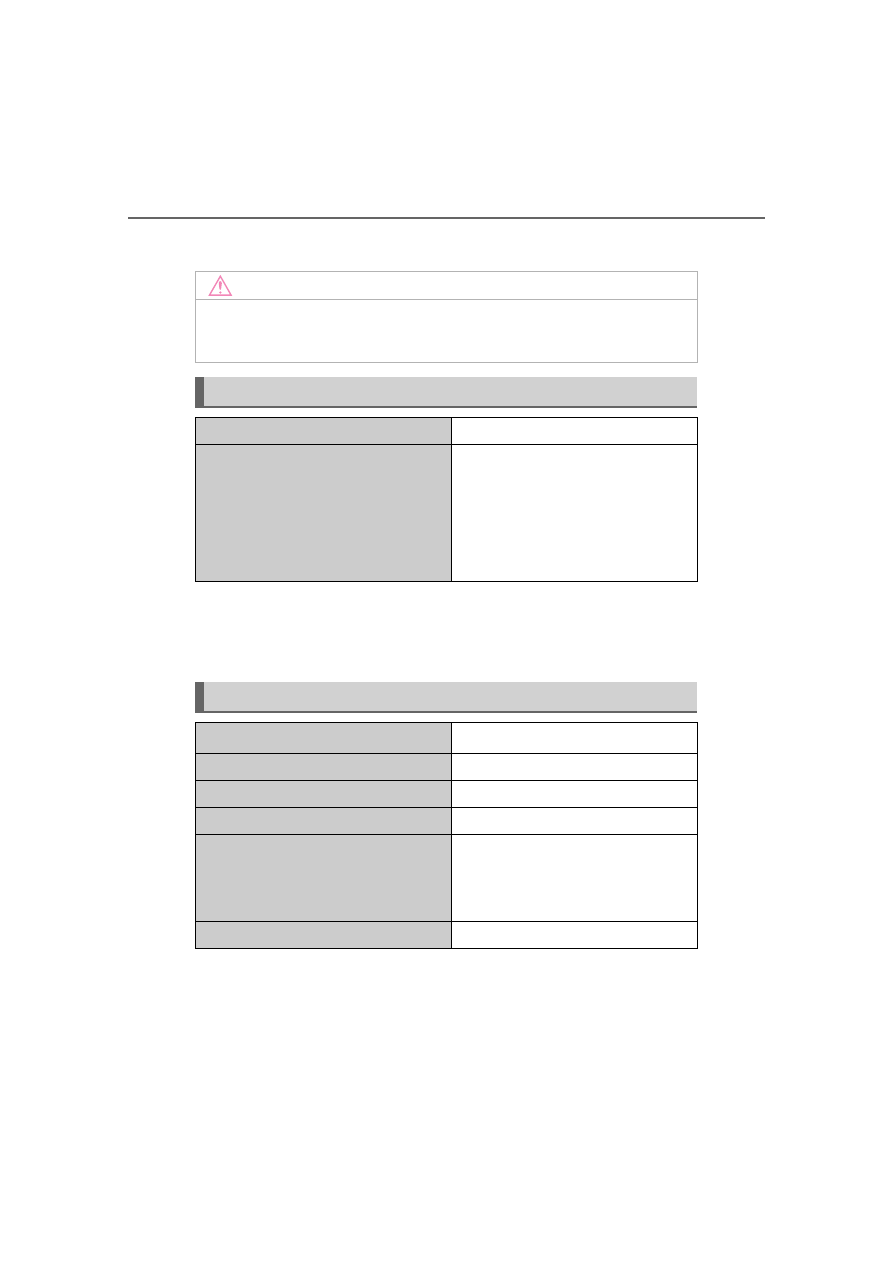LEXUS LC 500H (2019 year). Instruction - part 24

378
8-1. Specifications
*
: The fluid capacity is a reference quantity.
If replacement is necessary, contact your Lexus dealer.
*
: Your Lexus vehicle is filled with “Toyota Genuine Differential Gear Oil” at the factory.
Use Lexus approved “Toyota Genuine Differential Gear Oil” or an equivalent of match-
ing quality to satisfy the above specification. Please contact your Lexus dealer for further
details.
*1
: Minimum pedal clearance when depressed with a force of 112.4 lbf (500 N, 51.0 kgf)
while the engine is running <hybrid system is operating>.
When performing the brake pedal inspection, also be sure to check that the brake sys-
tem warning light is not illuminated when the engine is running <hybrid system is operat-
ing>. (If the brake system warning light is illuminated, refer to P.335.)
NOTICE
■
Hybrid transmission fluid type
Using transmission fluid other than “Toyota Genuine ATF WS” may cause deterioration in
shift quality and ultimately damage the transmission of your vehicle.
Differential
Oil capacity
0.90 qt. (0.85 L, 0.75 Imp.qt.)
Oil type and viscosity
Without LSD (Limited Slip Differential)
Toyota Genuine Differential gear oil LT
75W-85 GL-5 or equivalent
*
With LSD (Limited Slip Differential)
Toyota Genuine Differential gear oil LX
75W-85 GL-5 or equivalent
*
Brakes
Pedal clearance
*1
5.2 in. (132 mm) Min.
Pedal free play
0.04
0.24 in. (1.0 6.0 mm)
Brake pad wear limit
0.04 in. (1.0 mm)
Parking brake lining wear limit
0.04 in. (1.0 mm)
Parking brake indicator
*2
When pushing the parking brake switch for
1 to 4 seconds: comes on
When pulling the parking brake switch for 1
to 4 seconds: turns off
Fluid type
SAE J1703 or FMVSS No.116 DOT 3